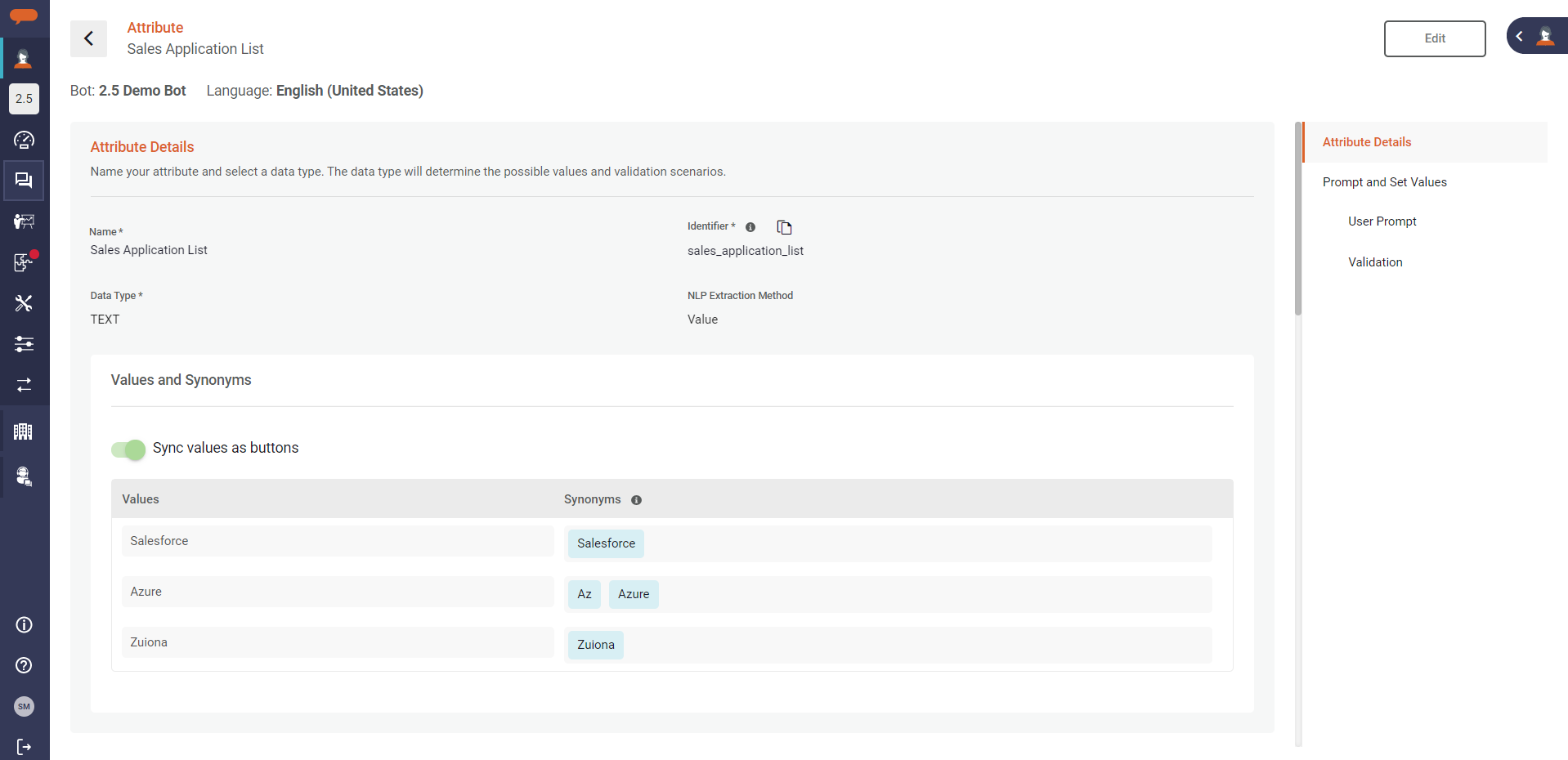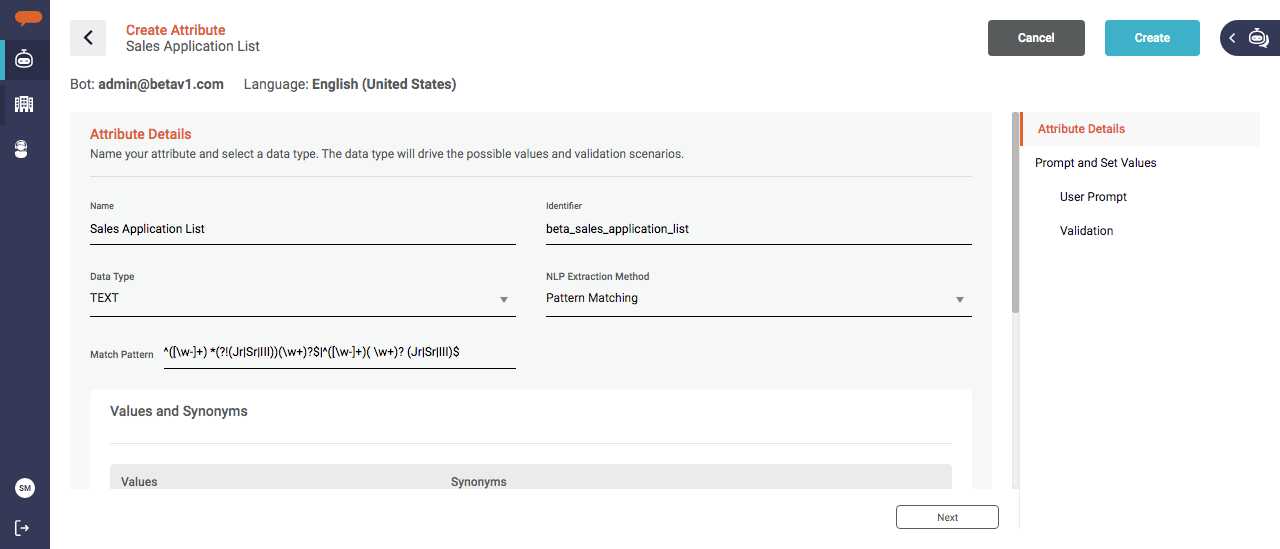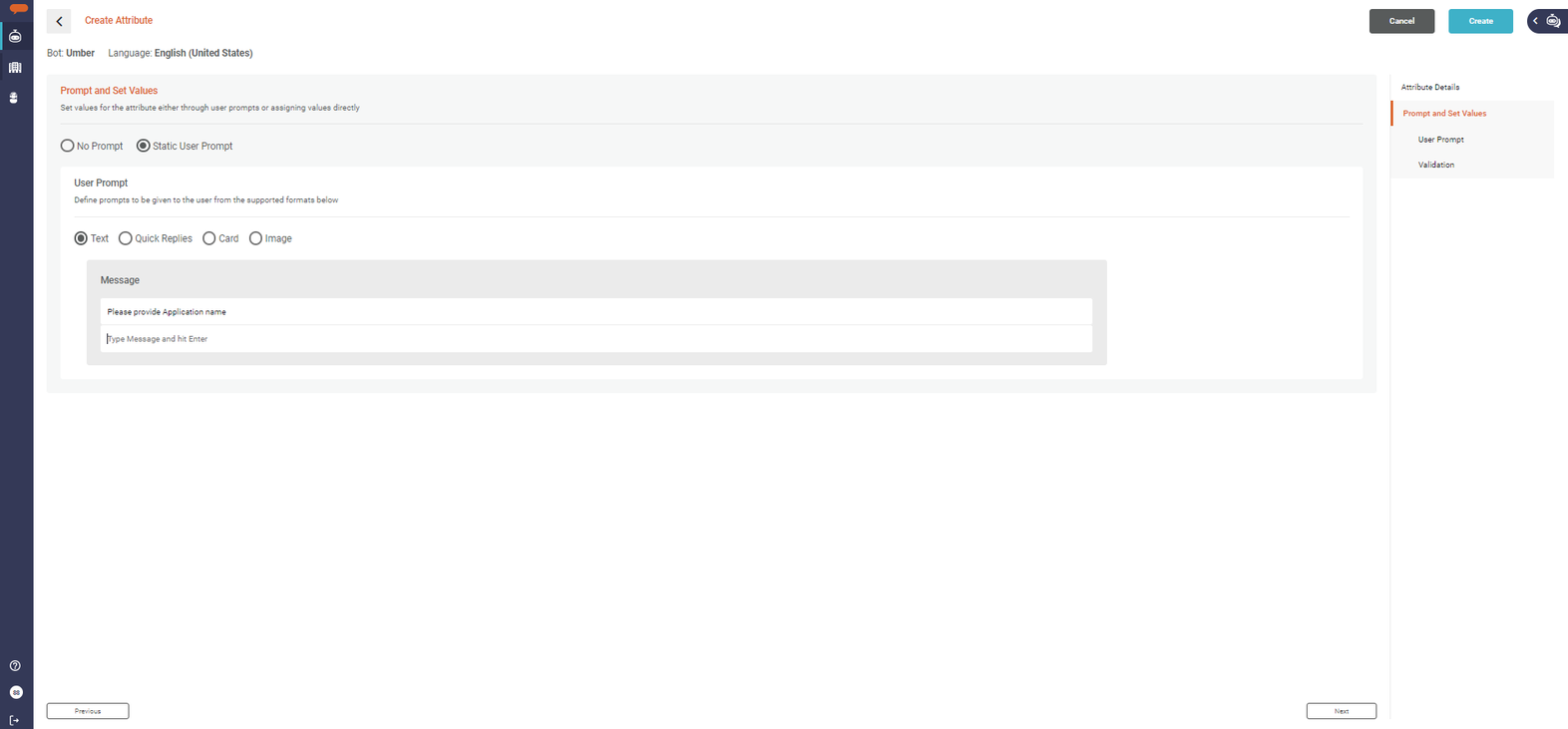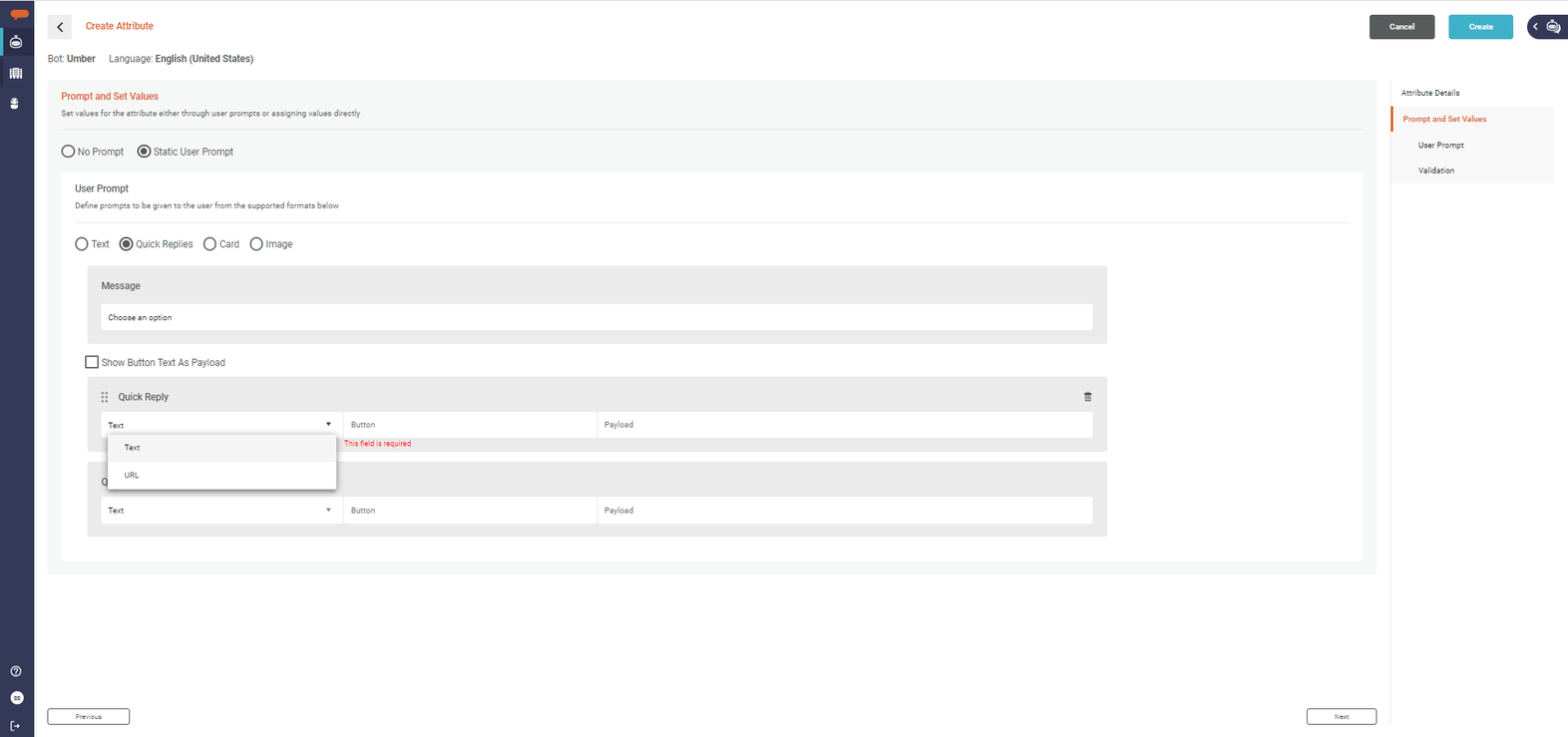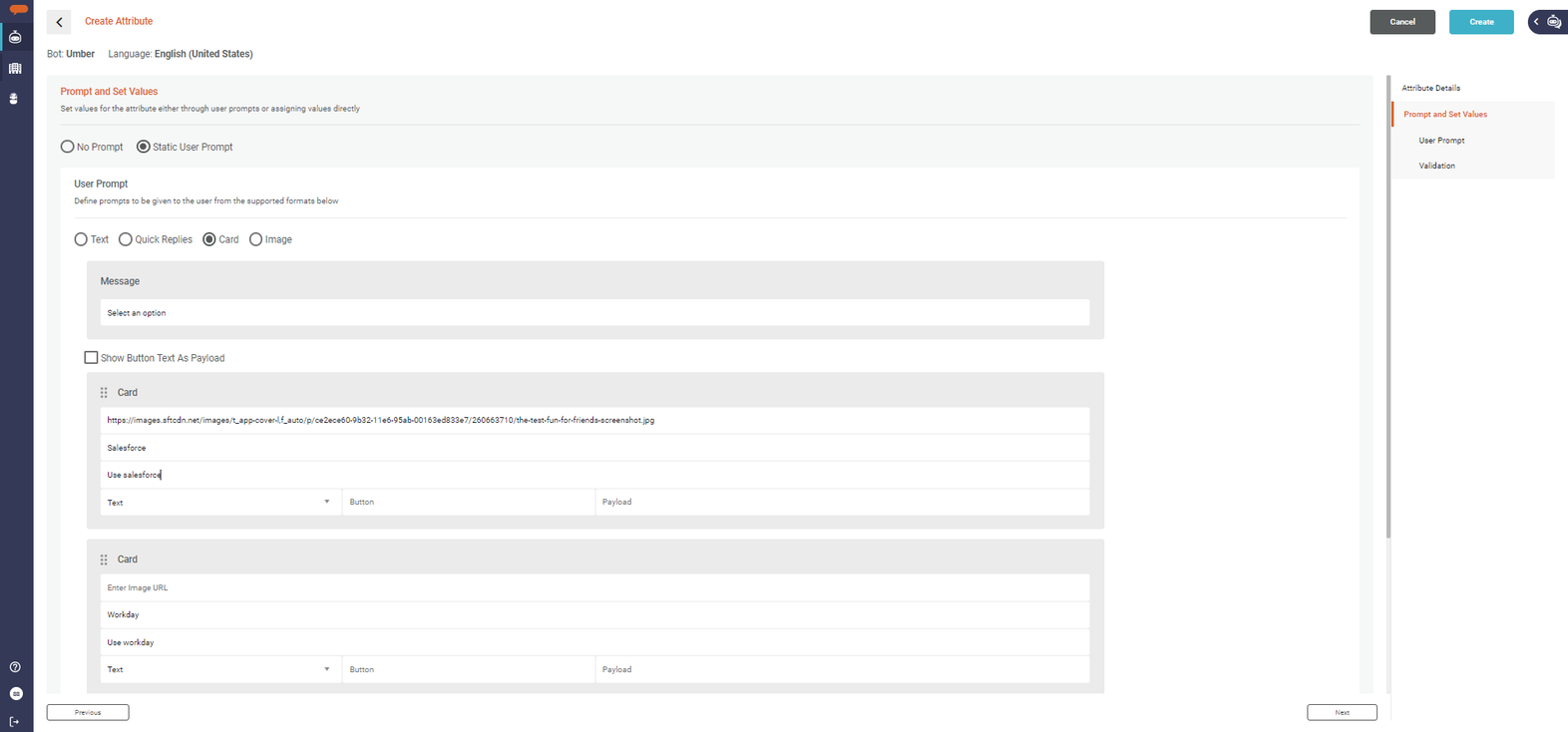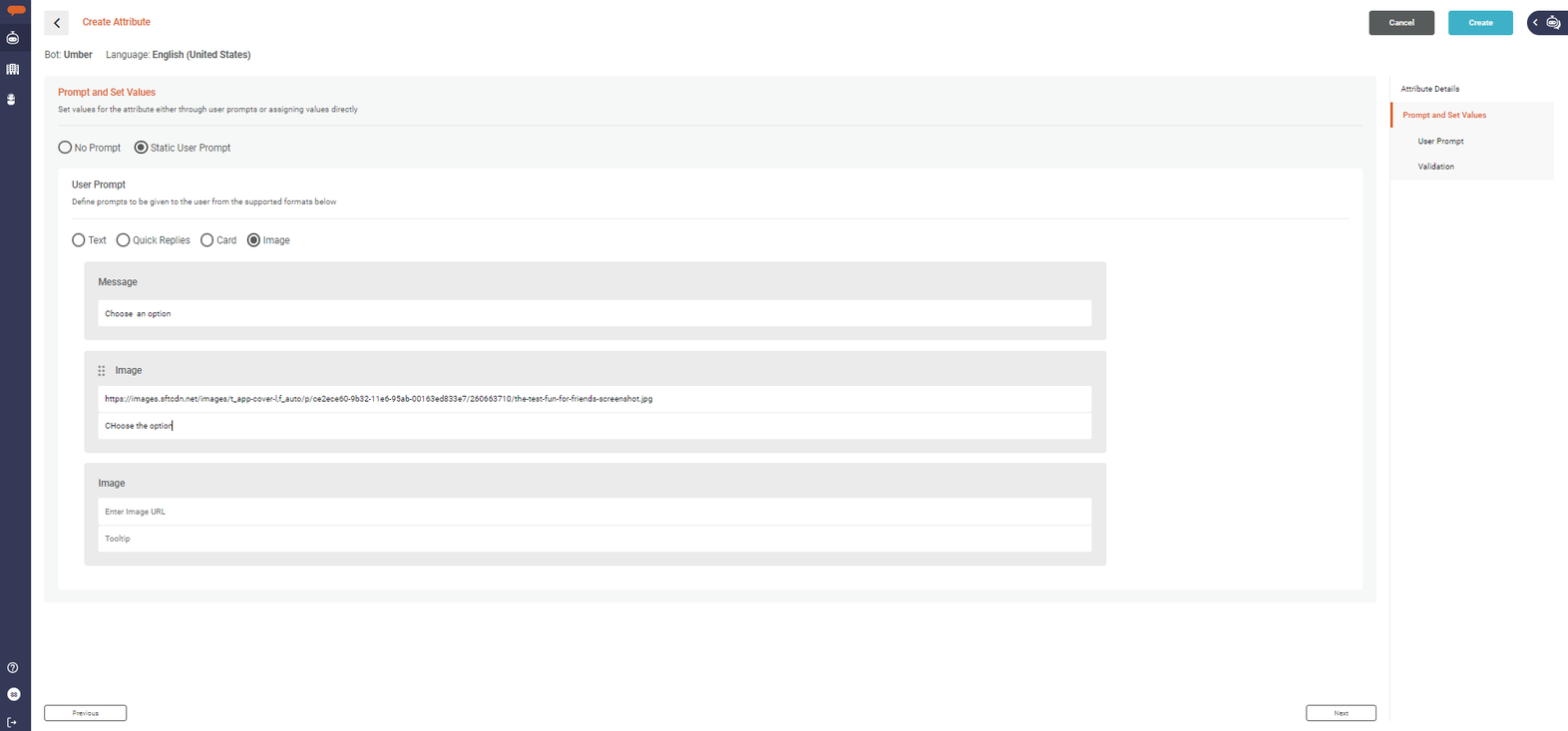Table of Contents maxLevel 6
...
Attributes are used to store information during a conversation between the bot and the user. The value of an attribute can be set from user input, a web services call (through Connected App), or passed from other skills. This allows for building dynamic conversations and gathering data to use to fulfill the user's request. Attributes are shared within a Bot, allowing them to be created and reused across skills.
...
On completing the details, click Next.
Build User Prompts
...
| Info |
|---|
While executing a Skill, End-user can skip Static Prompt attributes using Skip command. Refer System Commands on Bot Settings more information on Skip Command in Luma. If "Sync values as buttons" is selected, values in Value and Synonyms are added as button and payload in Quick Replies & Cards |
Build User Prompts
After the attribute details are defined, populate the User Prompt section. Each attribute can have a unique prompt associated with it. This makes creating a skill easier, as a prompt can be created once and reused across skills where the Attribute is used.
...
- Prompt the User: An attribute can have no prompt or a Static User Prompt. A No Prompt Attribute can be used for storing values that the system sets. While a Static User Prompt defines a prompt that the user will see and respond to.
- User Prompt Type: A user prompt can be Text, Quick Replies, Card or Image. The text type shows an open-ended question to the user. Quick Replies shows a message and buttons where the user can select one to respond to the prompt. The Card shows a message to the user followed by a series of cards with a title, subtitle, and button. The image shows a message to the user along with the corresponding image and Tooltip.
Text: A text prompt contains a Message. This is what is shown to the user. Multiple Messages can be added to have variety in the prompt to make the system seem more natural. A Message is selected at random each time the prompt is triggered. The user's exact response to the text prompt is stored in the Attribute. If a user enters a synonym and the attribute uses NLP Extraction, then the value defined in the details section is used.
Quick Replies: Quick Replies have a single Message and multiple options shown as buttons. The user selects a single button. The payload for the button they clicked is stored in the Attribute. Quick Replies make responding to prompts easier as users are not confused with open-ended questions. Quick Replies also improve data validation.
Card: Cards are useful when more information should be provided to the user when making their decision. This can be used for selecting a conference room where the location or number of seats is important in their decision. A card prompt contains a message; and for each Card an Image URL, a title, sub-title, button, and payload. The user selects one of the card buttons and the payload is the value that will be stored in the Attribute.
Image: Similar to Cards, the Image option is useful when a visual representation of available options should be provided to the user. This option shows a message to the End-user along with the images and related Tooltips. When End-user selects the required image, the text in the tooltip is assigned to the attribute.
| Info |
|---|
While executing a Skill, End-user can skip Static Prompt attributes using Skip command. Refer System Commands on Bot Settings more information on Skip Command in Luma. If "Sync values as buttons" is selected, values in Value and Synonyms are added as button and payload in Quick Replies & CardsWhen Using the 'Quick Replies' and 'Card', the selected button payload is assigned to the attribute. Select 'Show button text as payload' when the value/payload is not human-readable and should not be displayed to the end user. Luma internally maintains the mapping between the button text and the payload. The button text is displayed to the user on the channel. Ensure the button text is unique across all buttons when “Show button text as payload” is checked.” If the button text is not unique and is the same for all buttons, the mapping will hold only one entry which is the text mapped to the last button payload value. |
Validate User Input
| Info | ||
|---|---|---|
| ||
|
...
When the Attribute is assigned value in the desired format, the following attributes are automatically filled.
- @{global.<attributeidentifier>.latitude}
- @{global.<attributeidentifier>.longitude}
In the above example, the values will be assigned as below:
- Attribute @{global.<attributeidentifier>.latitude} will be assigned 17.447203
- Attribute @{global.<attributeidentifier>.longitude} will be assigned 78.34873
You can now, use the attribute in the next steps such as Integrations, messages, Rules etc.
